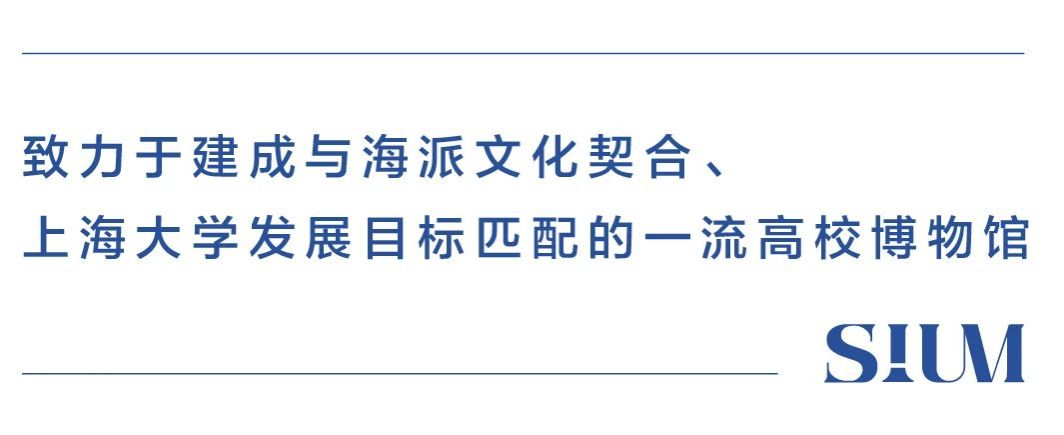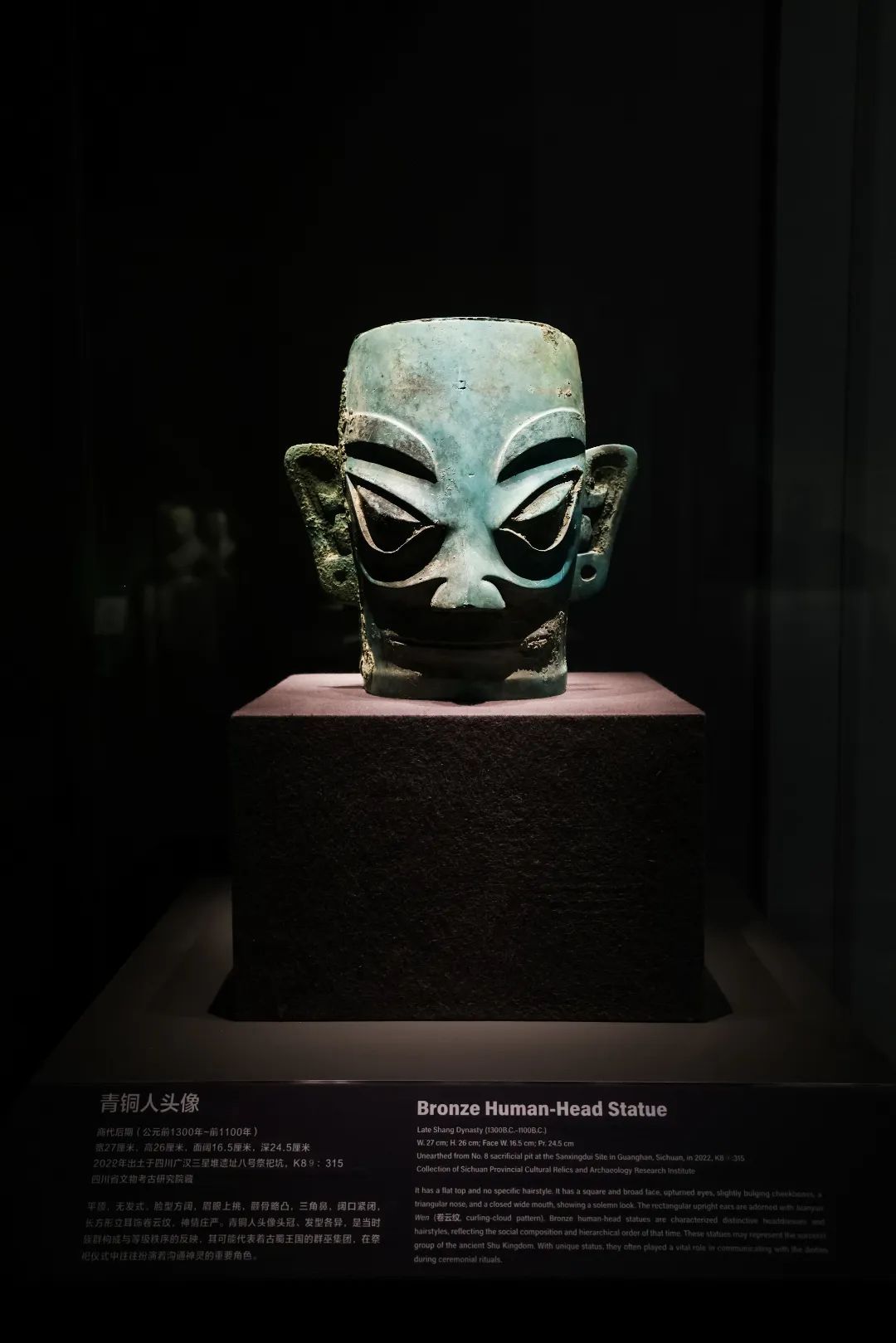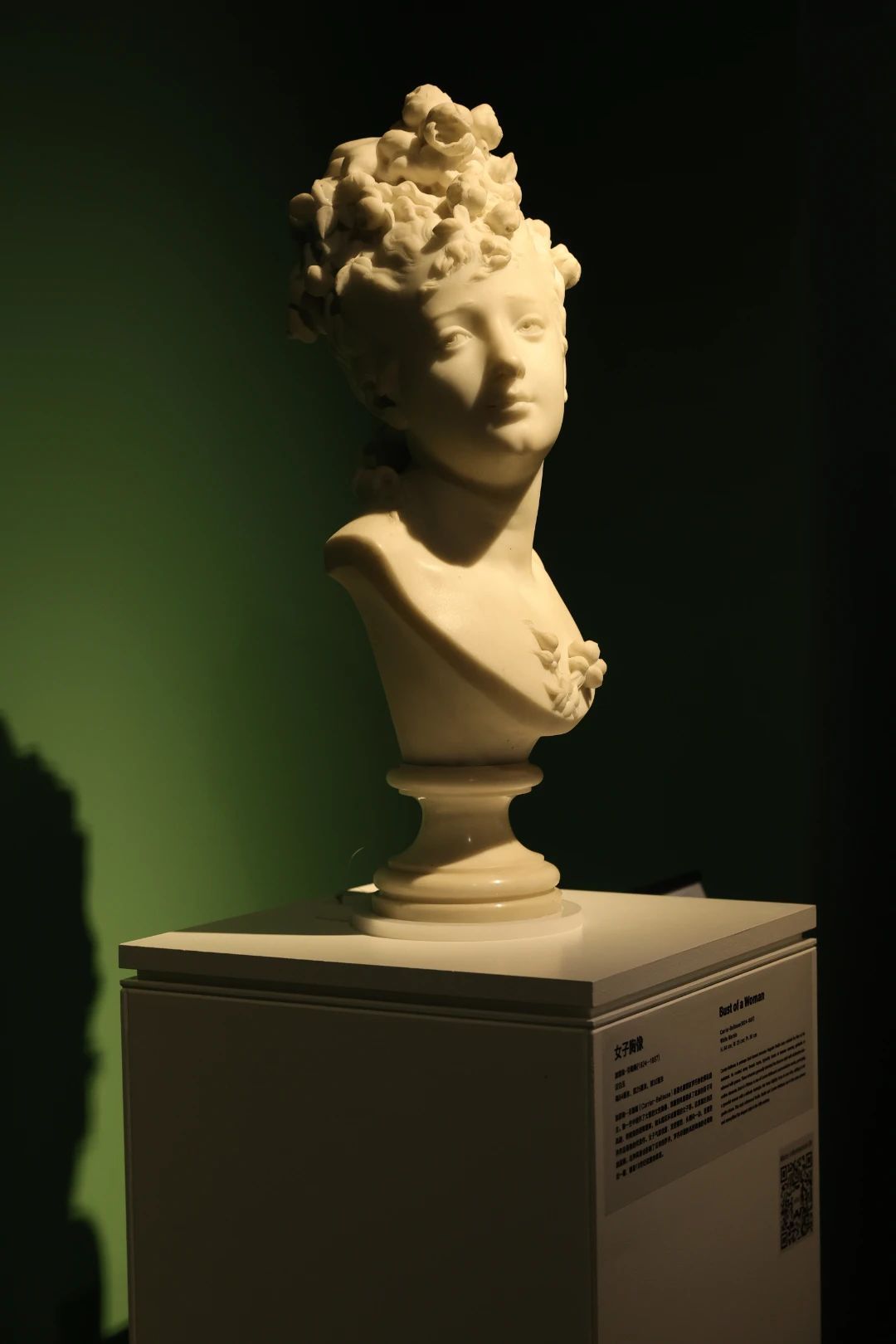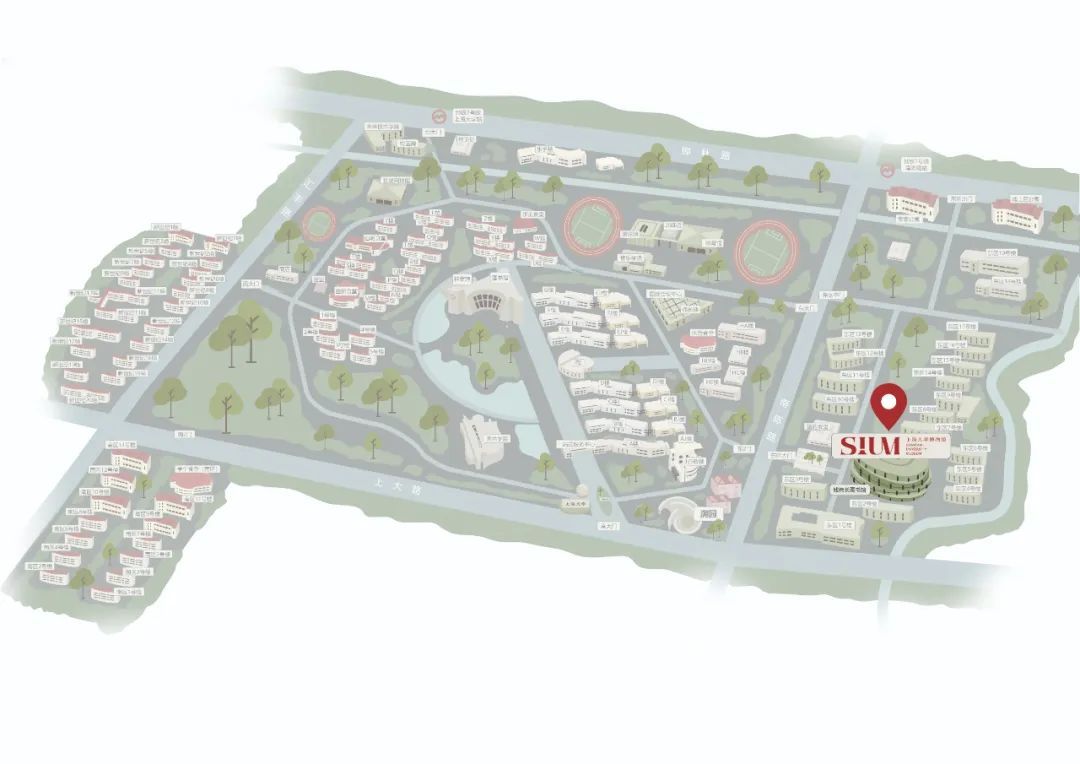
“沉睡三千年,一醒惊天下”的三星堆遗址,是中华文明璀璨星河中明亮而神奇的一颗。
罗丹是“现代雕塑之父”,他的作品中饱含对生命、自然的歌颂、热爱与忧思。
在上海大学博物馆举办的特展——“青铜之光:三星堆与罗丹的超时空对话”展出了许多三星堆、金沙遗址出土文物和罗丹及其同时代雕塑家的作品,让我们一起来详细了解展品背后的故事吧!
青铜人头像

· 商代后期(公元前1300年—前1100年)
· 宽27厘米,高26厘米,面阔16.5厘米,深24.5厘米
· 2022年出土于四川广汉三星堆遗址八号祭祀坑,K8⑨:315
· 四川省文物考古研究院藏
· Late Shang Dynasty (1300B.C.-1100B.C.)
· W. 27cm; H. 26cm; Face W. 16.5cm; Pr. 24.5cm
· Unearthed from No.8 sacrificial pit at the Sanxingdui Site in Guanghan, Sichuan, in 2022,K8⑨:315
· Collection of Sichuan Provincial Cultural Relics and Archaeology Research Institute
平顶,额前和脑后无发际线,无发式。脸形方阔,立刀眉,眼睛上挑,颧骨略凸,三角鼻,鼻梁较挺,鼻翼较宽,阔口紧闭,神情庄严。长方形立耳,耳廓有卷云纹装饰,两耳垂上各有一穿孔,应是悬挂装饰品之用。头像左右两侧及后侧上下各有两个圆形小孔。青铜人头像造型生动、内涵丰富,头冠、发型各异,是当时族群构成与等级秩序的反映。目前的研究认为,其可能代表着古蜀王国的群巫集团,因身份特殊,在祭祀仪式中往往扮演着沟通神灵的重要角色。它们又是古蜀国统治阶层的象征,为了得到祖先和众神的庇佑,向神灵偶像祭祀以加强神权和王权的影响和统治。
It has a flat top with no hairline at the forehead or head back and no specific hairstyle. It has a square and broad face, erecting and straight eyebrows, upturned eyes, slightly bulging cheekbones, a triangular nose with a straight bridge and wide nostrils, and a closed wide mouth, showing a solemn look. The rectangular upright ears are adorned with Juanyun Wen (卷云纹, curling-cloud pattern), and each earlobe is pierced, likely for hanging ornaments. There are two small round holes on the left and right sides of the head and an additional two on the upper and lower parts at the back. Bronze human-head statues are characterized by vivid and rich representations, with distinctive headdresses and hairstyles, reflecting the social composition and hierarchical order of that time. Research shows that these statues may represent the sorcerer group of the ancient Shu Kingdom. With unique status, they often played a vital role in communicating with the deities during ceremonial rituals. They also emblematized the ruling class in the ancient Shu Kingdom. For the blessings of ancestors and deities, the ruling class of the ancient Shu Kingdom would conduct rituals and offer sacrifices to the divine idols, aiming to strengthen the influence and authority of the theocracy and kingship.
女子胸像

· 加里埃-贝勒斯(1824—1887)
· 汉白玉
· 高64厘米,宽25厘米,深30厘米
· Carrier-Belleuse (1824-1887)
· White Marble
· H.64cm; W.25cm; Pr.30cm
加里埃-贝勒斯(Carrier-Belleuse)是著名雕塑家罗丹的老师和雇主。他生于1824年,童年时跟随家人来到巴黎,并在此学习绘画和雕塑。加里埃-贝勒斯一生中创作了大量的女性胸像,其雕塑风格继承了此前的洛可可风格,有明显的装饰意味,如头戴花环或葡萄的女子等。这里展出的这件作品是他的代表作。女子气质优雅,发型精致,头侧向一边,显得更加温婉。这种风格也影响了后来的罗丹,罗丹早期的风格和他的老师如出一辙,都是19世纪优雅的典范。
Carrier-Belleuse is perhaps best known because Auguste Rodin once worked for him as his assistant. He was born in 1824 and moved to Paris with his family during childhood, where he studied painting and sculpture. He created many female busts, typically busts of women wearing garlands or adorned with grapes. These artworks generally inherited the Rococo style with distinctive decorative elements. Bust of a Woman is one of Carrier-Belleuse’s representative works, portraying a graceful woman with a delicate hairstyle. Her head slightly turns to one side, adding to her gentle charm. This style influenced Rodin. Rodin and Carrier-Belleuse ran in the same groove and exemplified the elegant style in the 19th century.
展览时间:
2023年12月13日至2024年2月1日
展览地点:
上海大学博物馆一层临展厅
(上海市宝山区南陈路333号)
开放时间:
周一至周日8:30-16:30(16:00停止入馆)
校内师生凭本人一卡通入馆,无需预约。
校外观众采取网上预约方式入馆,扫描下方二维码或关注“上海大学博物馆”微信公众号,点击“个人预约”。

/地址/
上海大学博物馆
(南陈路333号)


